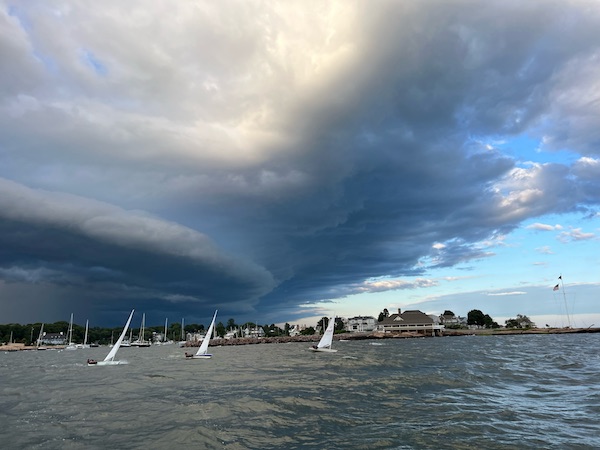BY HARRY WEEKES
While what constitutes a living thing still does not have a definitive answer, most people would agree that clouds are not alive. Small water droplets and ice particles, and no doubt a host of dust, viruses, bacteria, yeasts, and other tiny beasties, clouds are condensed water vapor. Pretty straightforward.
A first glance into the sky invariably returns the simplest of observations: “It’s cloudy.” “It’s overcast.” “It’s completely clear.” Clouds are literally the backdrop to the rest of the story.
A bit of time outside, and you start to talk a little differently. When Hilary asked me about the weather, I replied, “It’s one of those partly cloudy days that is always sunny.”
You know the ones? Where there are clouds all day, but you never seem to be in a shadow. Or the opposite—those days where there appear to be one or two big clouds and they are always blocking the sun … or letting it shine through for a couple of minutes before getting in the way again.
Then, there are the times where the clouds force your attention. A coming storm. A clap of thunder. A leading edge of virga that eventually becomes heavy rain.
The more you pay attention to them, the more dynamic clouds appear. The more alive. Leading edges will grow like rapidly expanding cauliflower. Different layers may move in opposite directions. Clouds will seemingly appear out of nowhere, and can disappear just as quickly.
On what started out as “the first day we haven’t seen a cloud,” slowly turned into something else altogether. As if from some cloud portal over the Thimble Islands (a small chain of islands near where my in-laws live), a monumental cloud tumbled into the sky. It grew great gray and blue arms and its edges were constantly brushed with the orange and pink and amber of the dropping sun. While the top ballooned into great lumps, the base flattened and stretched—the physical expression of the wind.
We were there for that wind. Or my daughter Penelope was, as she shot across the water in her Monday night sailing races. The clouds were ominous. The sky was purple. The sea was surging. What started out as six boats dwindled to three.
And the sky came to life.
Hilary wondered aloud how many subtle colors were present. At one point, two rainbows cut through the sky, illuminating the back of the harbor. The few spectators couldn’t stop marveling at this palpable atmospheric force.
The guy in charge of the races turned briefly towards us, shook his head, and summed it up perfectly, “Sick cloud.”
This was one of the magnificent moments—when the natural world both forces you to pay attention and rewards you splendidly for it.
The storm pushed east, through town, and then disappeared in the distance and into the night. But it lingered like a living and identifiable thing. Not just weather and clouds and a storm. But “that storm,” “that night,” “that sick cloud.”
A shared natural experience is a powerful connection and connector. When Penelope returned to the house, boat de-rigged and out of her sailing gear, her grandparents greeted her, “How was it out there?”
“Did you see that sky?” she responded, rhetorically. Then, “It was awesome.”
Exactly.
Harry Weekes is the founder and head of school at The Sage School in Hailey. This is his 53rd year in the Wood River Valley, where he lives with Hilary and two mini-Dachshunds. The baby members of their flock have now become adults—Georgia and Simon are fledging in North Carolina, and Penelope is fledging in Vermont.



